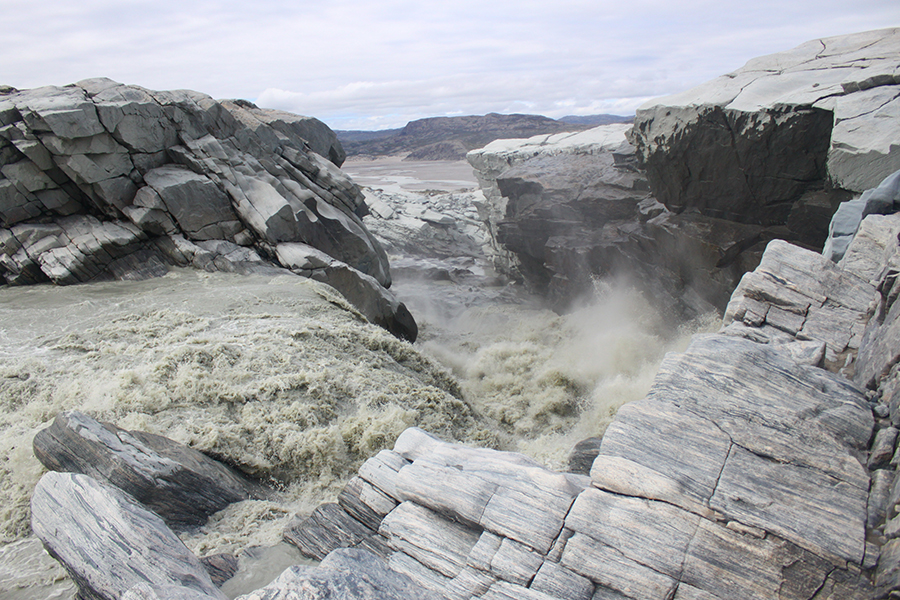***EMBARGOED UNTIL 3 P.M. EASTERN, NOV. 23***
“The data from an Antarctic lake is particularly exciting,” said Florida State University postdoctoral fellow Jon Hawkings. “Most people tend to think of Antarctica as just ice, but we’ve known about these lakes underneath the glaciers in Antarctica for 40 years and over 400 of them have currently been identified. Some scientists refer to the subglacial environment in Antarctic as the world’s largest wetland. The challenge for scientists is it’s just extremely difficult to sample them.”
Hawkings, along with colleagues at Florida State and Montana State University, has published a new study this week in the Proceedings of the National Academy of Sciences exploring these subglacial waters.
The study specifically examines the liquid water beneath the ice sheets in Antarctica and Greenland. About 10 percent of the Earth’s land surface is covered by these ice sheets, and these polar environments are undergoing rapid change as a result of rising temperatures. Scientists are greatly interested in understanding these environments and how continued warming will affect critical geochemical processes into the future.
Hawkings analyzed the water samples focusing on what are called trace elements – chemical elements that are present in extremely small amounts but that are essential to microscopic organisms and thus the global carbon cycle. Scientists thought for years that the waters beneath glaciers worldwide contained these elements in such miniscule quantities that they didn’t play a significant role in the Earth’s geochemical and biological processes.
“What we found is actually that ice sheets are seemingly more important to life processes than we originally thought,” said FSU Associate Professor of Earth, Ocean and Atmospheric Science Robert Spencer. “As big unknowns in our contemporary understanding of how our planet works are uncovered, it reminds us of how much there still is left to learn.”
For example, scientists expected to see less than 5 micrograms per liter of dissolved iron (an extremely important trace element) in some of these subglacial waters, but they saw up to 1,000 micrograms per liter. These large variations may make a major difference in how much life can be sustained in extreme subglacial ecosystems and in the ocean waters that receive ice sheet meltwater.
“These trace elements are kind of like the vitamin tablet people take every day,” Spencer said. “Although we only need small amounts of these materials, they are fundamental for the development of healthy ecosystems.”
Collecting subglacial waters for analysis is no easy feat though, particularly in Antarctica. Researchers must work in remote and harsh environments.
Hawkings’ and Spencer’s collaborators from Montana State University, Professors John Priscu and Mark Skidmore, orchestrated a logistically complicated research expedition to Antarctica to drill more than 3,500 feet through the Antarctic Ice Sheet.
After receiving funding from the National Science Foundation in 2016 for the project SALSA (Subglacial Antarctic Lakes Scientific Access), Priscu led a field campaign that involved moving almost 1 million pounds of gear by aircraft and tractor traverse across the ice sheet to the field site.
Then, from December 2018 through January 2019, the SALSA project Science Team drilled through about three quarters of a mile of ice into Mercer Subglacial Lake, a lake more than 5.5 miles (9 kilometers) long and 50 feet (15 meters) deep. They chose that particular lake as it was located where two ice streams meet.
“We were interested in the physical, chemical and biological processes occurring in that specific lake, but then there is also this broader context of these lakes being part of the greater hydrological system under the ice sheet,” Skidmore said. “We want to see what’s being generated beneath the ice sheet and how that connects to the coastal environments.”
Skidmore took samples under a protocol that Hawkings laid out and then shipped them back to the United States via a temperature-controlled cargo boat, taking several months, and then forwarded to Tallahassee via overnight delivery in special coolers to keep the sample temperatures stable.
Hawkings and colleagues separately collected samples in Greenland from a large meltwater river that emerged beneath Leverett Glacier. The fieldwork, led by Jemma Wadham of the University of Bristol in the United Kingdom, involved monitoring the hydrological and geochemical characteristics of the river over a three-month period during the summer melt season.
Hawkings and Spencer then conducted geochemical analysis in specially designed laboratories at the FSU-headquartered National High Magnetic Field Laboratory that minimize dust or other environmental factors that would potentially contaminate the samples.
The researchers said their collaborative resources and interdisciplinary approach ultimately resulted in a study that will move their field forward.
“Discoveries are made at the intersection of disciplines,” Priscu said. “The PNAS paper intersects many disciplines and shows the power of international collaboration. Results in this manuscript have transformed our view of how polar ice sheets influence the Earth System.”
Other institutions contributing to this study are the German Research Centre for Geosciences, the University of Bristol and Cardiff University in the United Kingdom, the Ohio State University, the Swiss Federal Institute of Technology in Lausanne and Charles University in the Czech Republic.
This work was funded by the National Science Foundation, a European Commission Horizon 2020 Marie Skłodowska-Curie Actions fellowship and the Natural Environment Research Council (United Kingdom).
###


